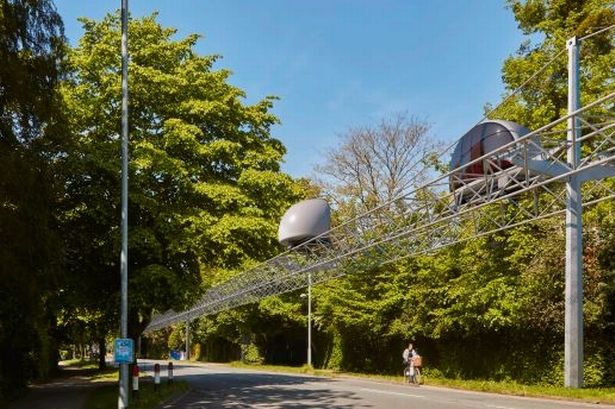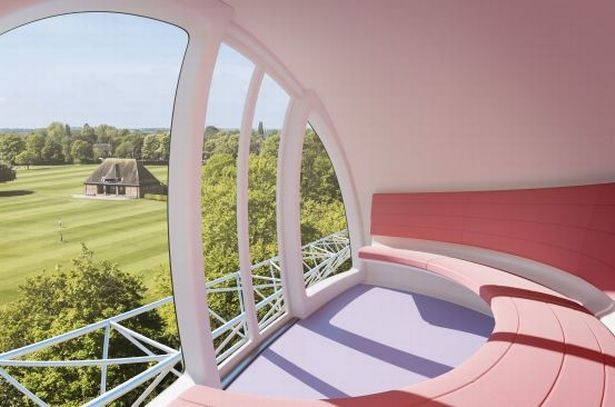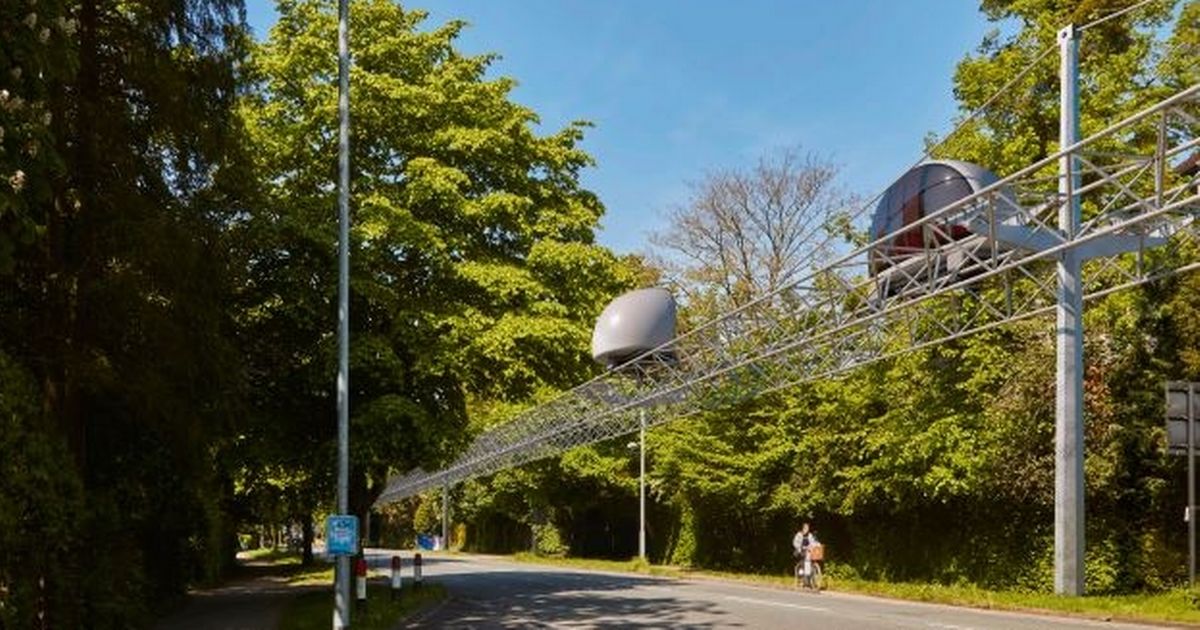Its inventor said it would be cheaper than a rail or tram link Proposals for ‘Aerial’, a pod-based aerial transport system that designer Rob Hutson says would be cheaper and more effective than trams or railway to connect Bristol Airport with the city of Bristol(Image: Rob Hutson)
Proposals for ‘Aerial’, a pod-based aerial transport system that designer Rob Hutson says would be cheaper and more effective than trams or railway to connect Bristol Airport with the city of Bristol(Image: Rob Hutson)
An architect has called on the West of England’s metro mayor to get in touch, after claiming he has come up with what would be the cheapest and least impactful way of creating a transport link between Bristol Airport and the city centre – an aerial rail system with driverless pods travelling five metres up in the air. Called simply ‘Aerial’, its inventor Robert Hutson said it could be built quickly and at a fraction of the cost of any light rail, railway or tram system.
Mr Hutson, from Essex, has already designed and proposed a version of ‘Aerial’ to connect Cambridge with the town of Cambourne nine miles away, and has proposed the scheme for the growing town of Maldon in Essex too.
Now, he said he is in the early stages of designing an ‘Aerial’ system to travel the eight miles from Bristol Airport to the centre of Bristol, with plans for the driverless cars or pods running on a track at speeds of up to 40mph, 17-20ft above the A38 road. The cars would be electric-powered, and travel at one minute intervals, taking between ten and 15 minutes to reach Temple Meads station.
Mr Hutson’s initial plan is for the aerial track to follow the A38 from Bristol Airport into Bristol at Highridge and Bedminster Down, before joining the course of the Bristol-Taunton mainline at the Parson Street gyratory, travelling above the railway line all the way into Temple Meads.
He said the system could transport 480 people an hour, which could be increased to 720 per hour. “The system uses eight person cars on three wheels, travelling on tubular steel triangulated gantries, supported at 50m centres by columns with 5.1m clearance above ground,” Mr Hutson explained.
“The gantries will be twinned, the cars circulating in a one-way system. Passengers arrive at either terminal accessing the platform by staircase or lift and move directly into a waiting car. Passengers will have individual seats with a clear panoramic view,” he added.
“This will be an ‘on demand’ system. Each car would be powered by a battery/electric motor system and controlled centrally. The capacity would be one car a minute with the potential to transport 480 people per hour. This could be further increased by allowing four people to stand in each car giving a capacity of 720 per hour.
 Proposals for ‘Aerial’, a pod-based aerial transport system that designer Rob Hutson says would be cheaper and more effective than trams or railway to connect Bristol Airport with the city of Bristol(Image: Rob Hutson)
Proposals for ‘Aerial’, a pod-based aerial transport system that designer Rob Hutson says would be cheaper and more effective than trams or railway to connect Bristol Airport with the city of Bristol(Image: Rob Hutson)
“Significantly Aerial connects the centre of communities and as such removes traffic from the road system completely,” he added.
Last week, Bristol Live reported that new Metro Mayor Helen Godwin said connecting Bristol Airport with the city of Bristol with some kind of mass rapid transit system was a priority of her long-term transport plan, and said she would like such a system to provide benefits to areas of South Bristol too, as well as link with proposed housing developments.
At the same time, North Somerset Council confirmed its plan to meet Government housing targets would include a new town on the southern edge of Bristol on the site of what is now Woodspring Golf Club, on the A38 road between the airport and the city.
The challenge of Bristol Airport’s location – around eight miles but 130m up a hill from the city – has so far proved too much of a challenge for transport planners and the airport is the only major one in Britain not to be linked to its city by some kind of rail, light rail or tram system.
READ MORE: New transport route to Bristol Airport ‘absolutely achievable’ but thousands of homes will need to be builtREAD MORE: Thousands of new homes mapped which could be built in green belt expansion
The costs of creating such a link have so far proved too high, but Mr Hutson said his project was significantly cheaper.
“There are many variables in this judgment and individual cases will be different, but it is easy to see that Aerial’s frugal use of material will have an impact. Equally important is the fact that almost all the elements of the system will be mass produced in a factory and merely assembled on site,” he said.
“The system promotes rapid construction and hence short contract periods saving costs,” he said. He estimates that the cost of his system is around £5m per kilometre – which is less than half the alternatives of a railway or a new tram or new road, and the running costs are less too.
 Proposals for ‘Aerial’, a pod-based aerial transport system that designer Rob Hutson says would be cheaper and more effective than trams or railway to connect Bristol Airport with the city of Bristol(Image: Rob Hutson)
Proposals for ‘Aerial’, a pod-based aerial transport system that designer Rob Hutson says would be cheaper and more effective than trams or railway to connect Bristol Airport with the city of Bristol(Image: Rob Hutson)
“A new railway costs about £30m per kilometre. A road, or some kind of tram or light rail on a road is about £12m-£15m per km. I think Aerial is about £5m per kilometre, so it’s a lot cheaper.
“It is obvious there is a need for new thinking in transport,” he said. “The UK will have to invest heavily in transport infrastructure over the coming decades, Aerial offers a new way of doing things that has many advantages. It is local, it is convenient and most importantly, it is affordable,” he added.
